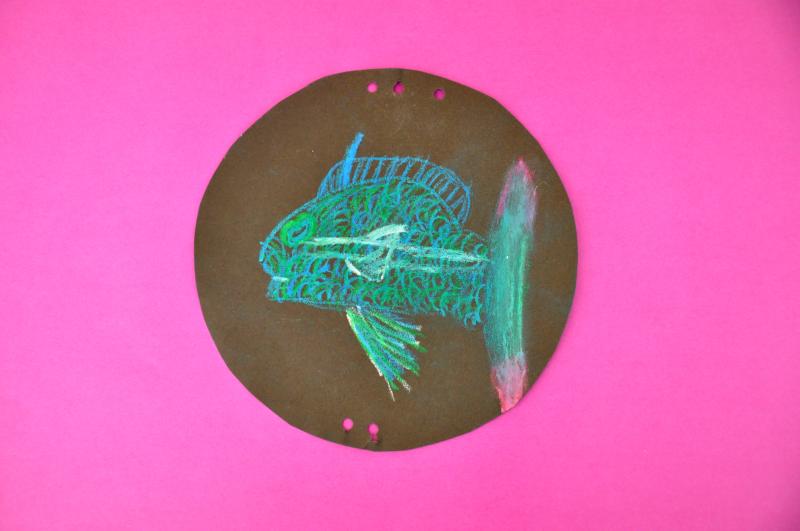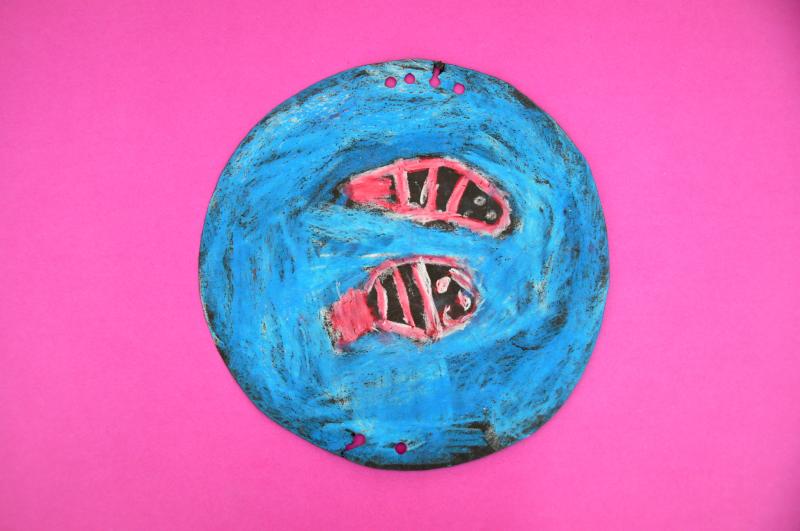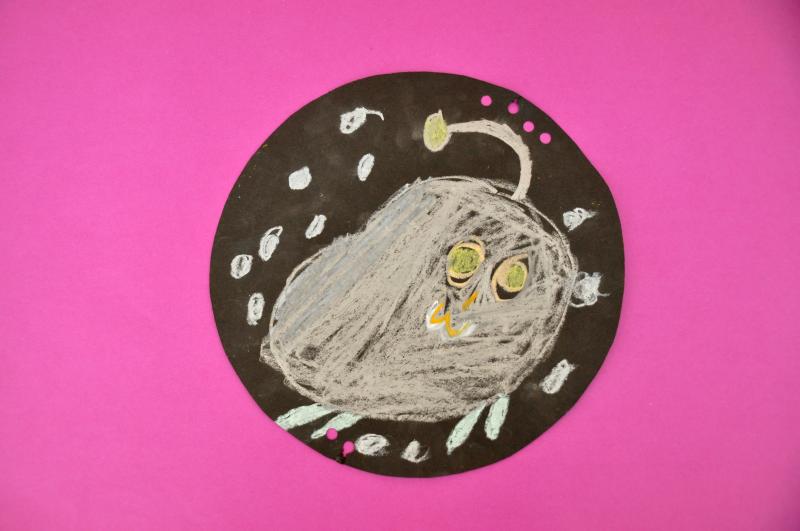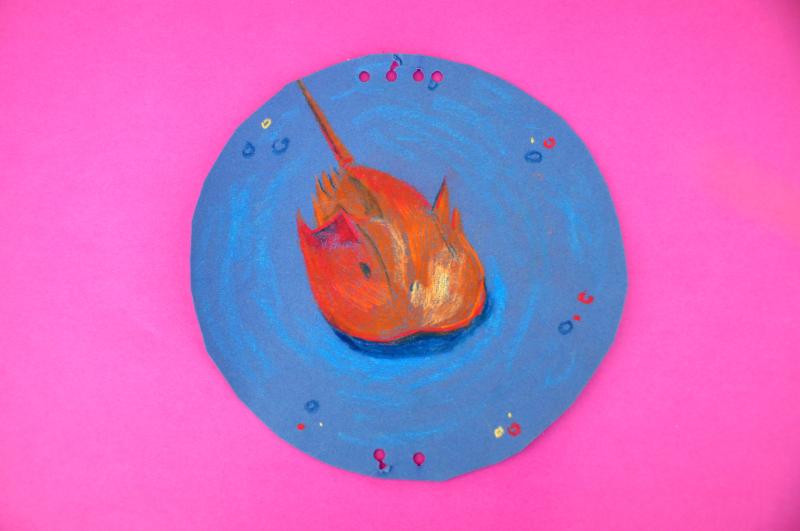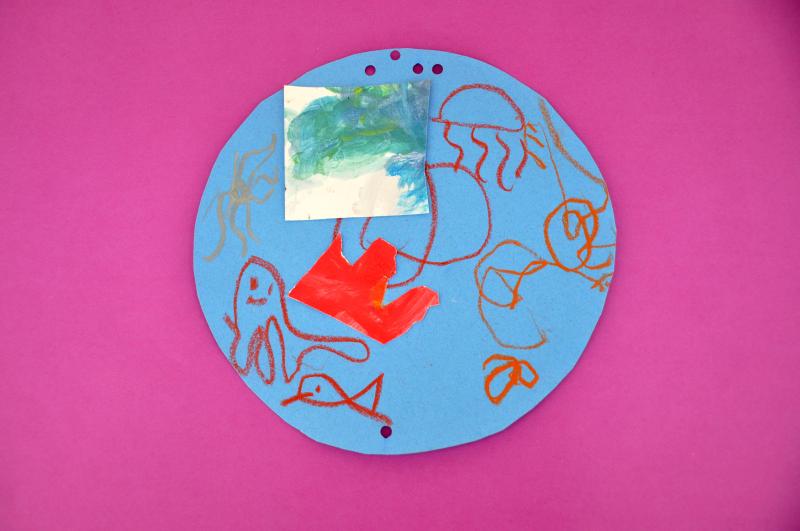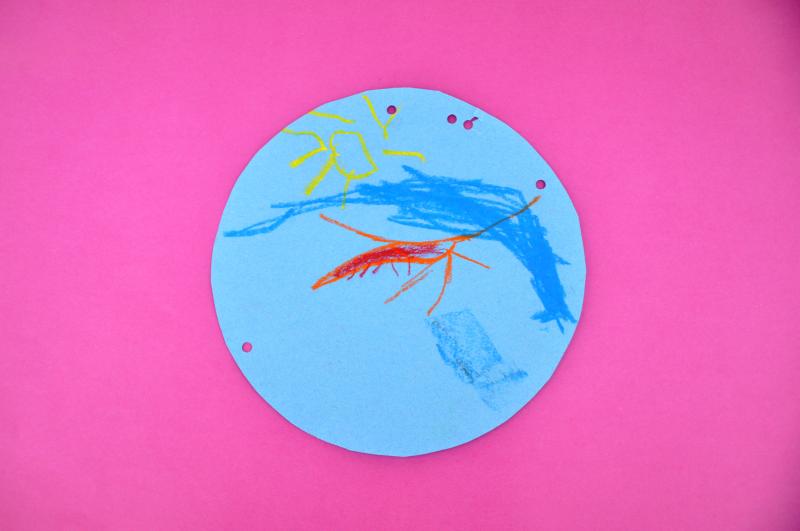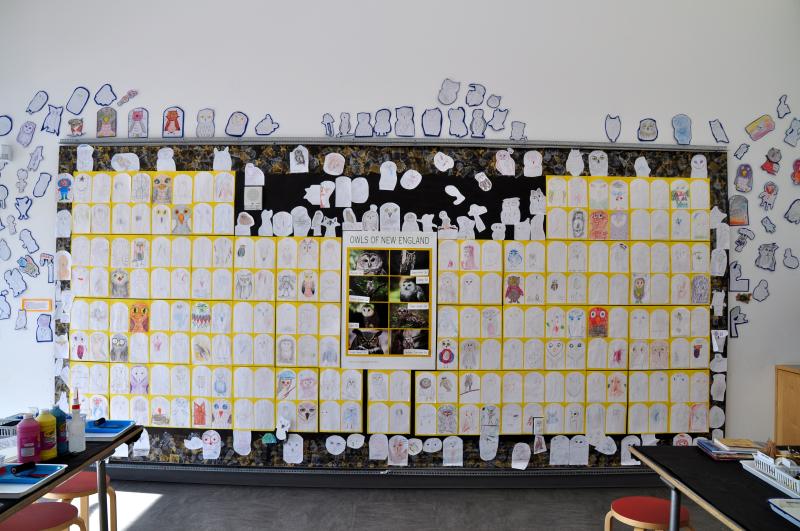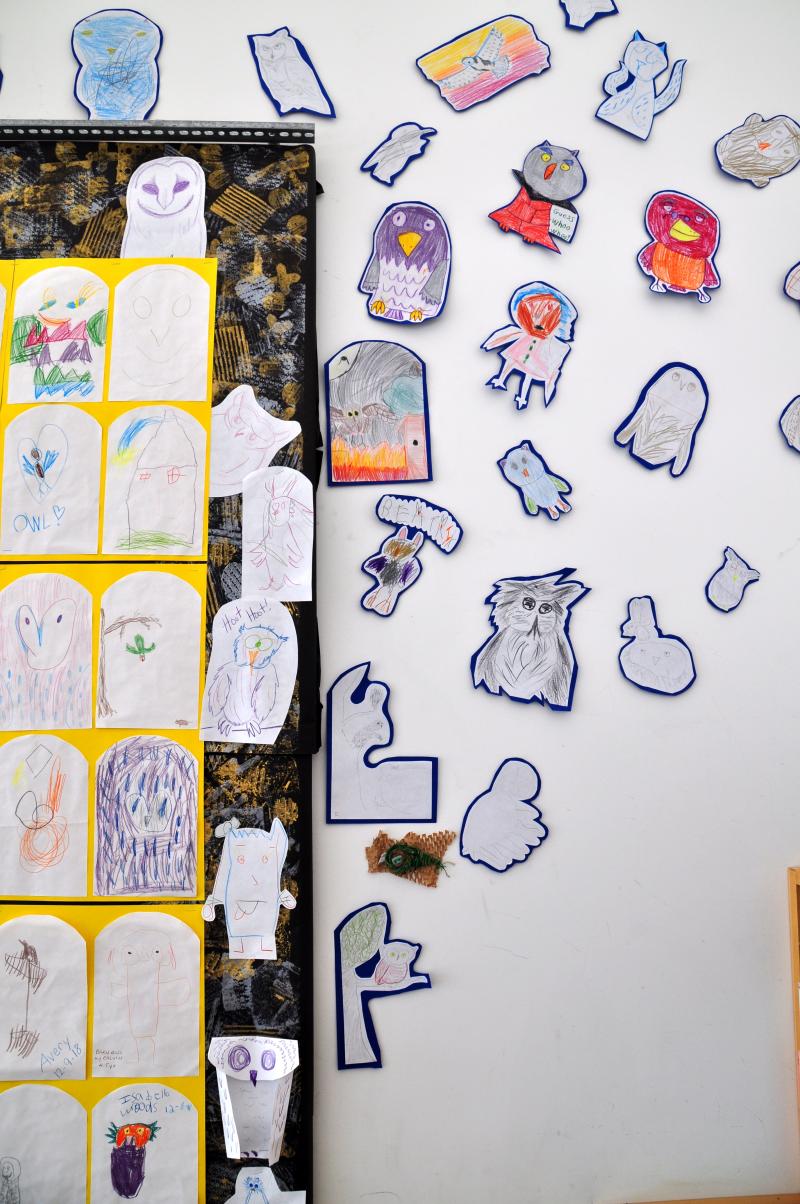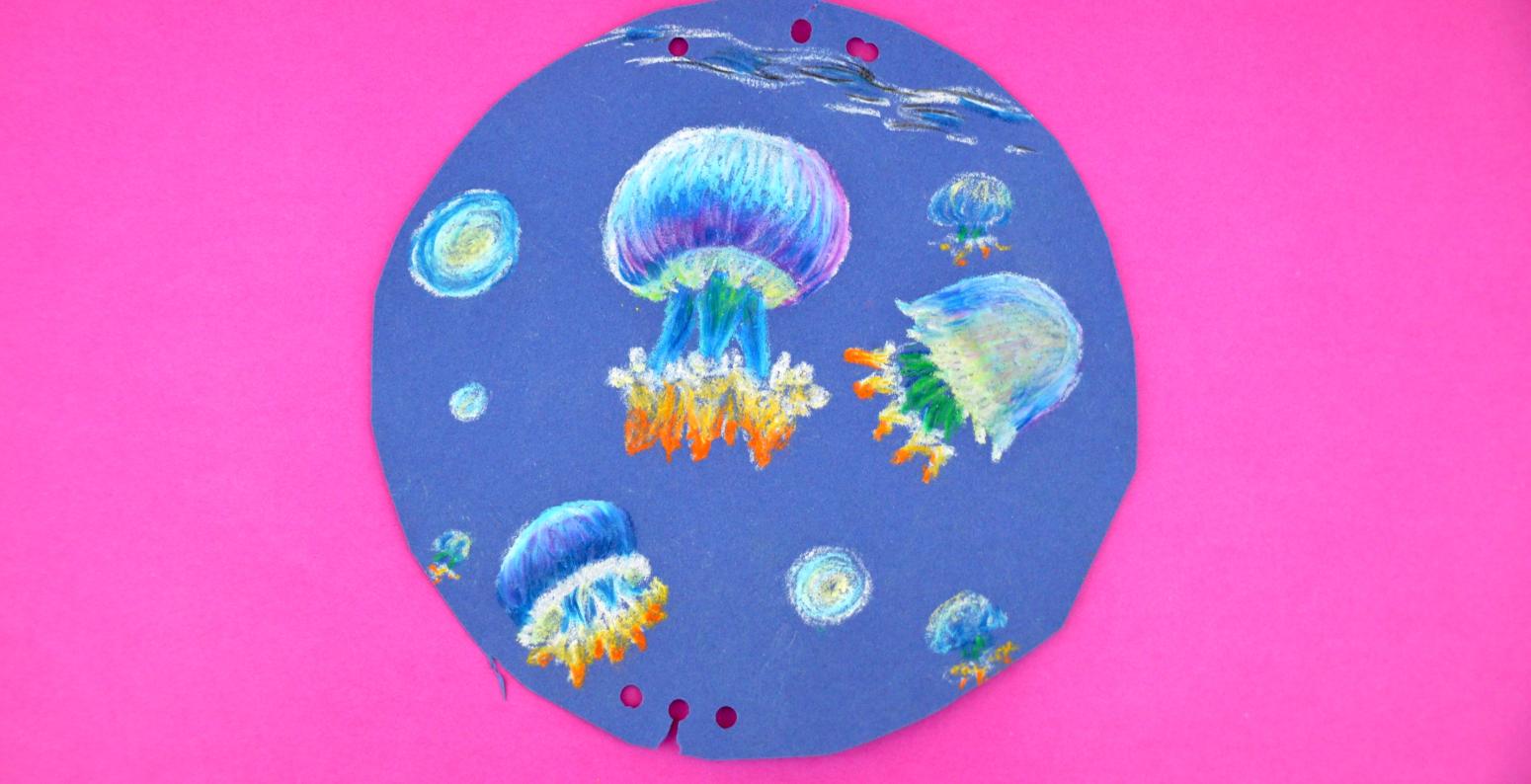
Drawing from Photographs

The Art Studio team recently reviewed and re-organized our bookshelves to make them more accessible to guests, and to identify areas for development. We grouped books by topic on the shelves and created signs with subject headings. One new section we created as part of this process was an area dedicated to photography books.
In the past, we have sometimes put these books out as inspiration for drawing projects. We want to continue to build the photography section of our resources, so I spent some time reflecting on two past drawing projects in order to understand how the books were used, and what books we might add in the future. One project I looked at, Art Oceanographers, was an Everyday Art Project inspired by the 2019 exhibition, Under the Sea with Eric Carle. The second project I reflected on was a drawing prompt in the Galleries for the 2018 exhibition Illustrated Owls: A Who’s Hoo from the Museum’s Vault.
Key Questions
Whenever we introduce drawing materials in the Art Studio, we are aware that inviting people to make a drawing can sometimes be intimidating. Whether it is because of an expectation that a drawing needs to look “real” in order to be successful, or the daunting prospect of a filling up a blank piece of paper, we need to think carefully about the design of drawing projects in order to encourage exploration and overcome hesitation.
I have wondered, do photography books help inspire the drawing process or do they add to the intimidation factor? When we design drawing projects we try to expand the idea of successful drawings beyond the visual outcome to include the process of looking closely, making revisions, noticing details, showing movement, capturing emotion, and telling stories. The beauty of a drawing is in the unique way a person notices and selects certain details to include, the individual way that they describe these details with drawing tools on a page, and the process of close looking that happens every time we engage in the drawing process. By providing photography books to look at, are we encouraging guests to enter into a process of learning through observation and individual self-expression? Or do these books work against this goal?
By looking back at our notes from the projects, photos, and original drawings left by guests, I was able to see the ways photography books encouraged close observation and inspired engagement with materials. The photographs, and drawing from them, became a way for guests to connect to, and learn about their chosen subject, and then consolidate their learning by creating something entirely new and unique.
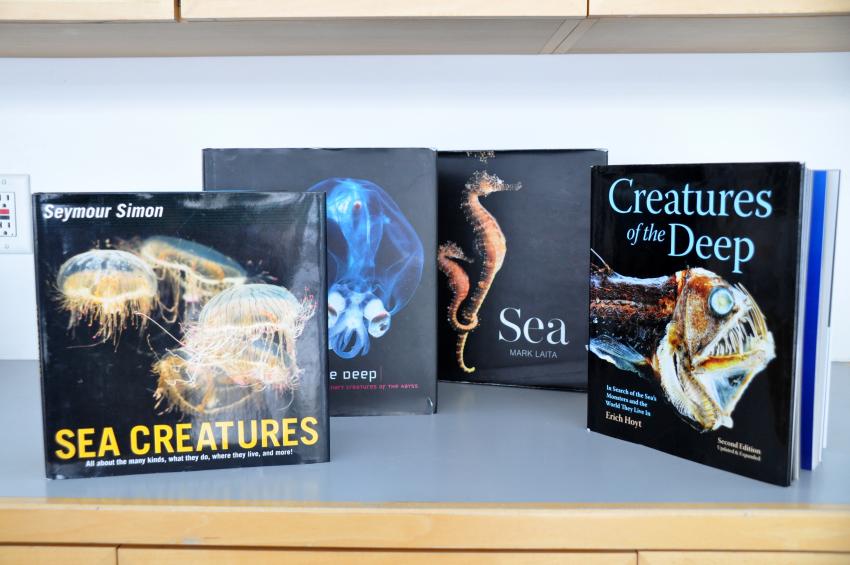
Ocean Drawings
In the Everyday Art Project, Art Oceanographers, we invited guests to experiment with oil pastels and collage materials to create images of ocean life. As part of this project, we bought used copies of several underwater photography books for inspiration alongside our selection of illustrated picture books. One of these books, Seymour Simon’s Sea Creatures, was specifically written for children. However, most of the photography books we featured were not specifically designed for young audiences, but because of the quality and content of their images they appealed to all ages.
The artworks above were made with oil pastels, and by a wide range of ages. In all of these drawings there are carefully observed details, rendered through outline, shading, and color. While we couldn’t dive into the ocean to see these animals from the Art Studio, the photography books gave guests the opportunity to zoom-in on details, and learn more through the act of observation. The drawings give a glimpse into what they found interesting based on what was included and focused on. While I can identify some of the photographs that provided inspiration for these drawings, none are an exact copy. Some have added scenery and other animals, others have selected portions of the photograph to focus on. The oil pastels themselves offer exciting opportunities for blending, and the artists have used the materials to create a unique sense of texture and movement in their drawings.
Owl Drawings
In the exhibition Illustrated Owls: A Who’s Hoo from the Museum’s Vault, guests were invited to draw their own owls at a table in the center of the Gallery.
For inspiration, guests could look at the illustrations on display, and a variety of photography books featuring owls on the drawing table.
What strikes me about the owl drawings, much like the ocean oil pastels, are the different details that the artists picked up on: from the way an owl’s eyes look, to the patterning of their feathers, from the proportions of the birds, to the talons on their feet. The photographs allowed the artists to look closely and select which details to focus on and include in their artwork. Some artists focused on the expression of the owls, others on the movement, and still others focused on the owls in their habitat. Each is a personal and unique take on these beautiful animals and shows both the individuality of the animals and the artists depicting them! Unlike the ocean creatures, we can sometimes see owls in their environment in our local area. However, photographs give us the opportunity to look more closely at, and learn about, an animal that we may be familiar with but rarely see up close.
Reflections
When I looked back at the artwork created, I see evidence of what individual artists were interested in. In some drawings, narratives form that may have used the photographs as a launching point, but then went in an exciting new direction. Artists also make decisions based on the qualities of the materials. Reflecting on the projects, I remember how much time guests spent looking at the photography books and of how important observation is to the act of drawing. I can now see how the photography books enhanced each of these drawing prompts, and added a potentially inspiring starting point to the drawing process. We are going to continue to build our photography book collection and look for opportunities to include them in future projects whether drawing, painting, collage, or sculpture!

